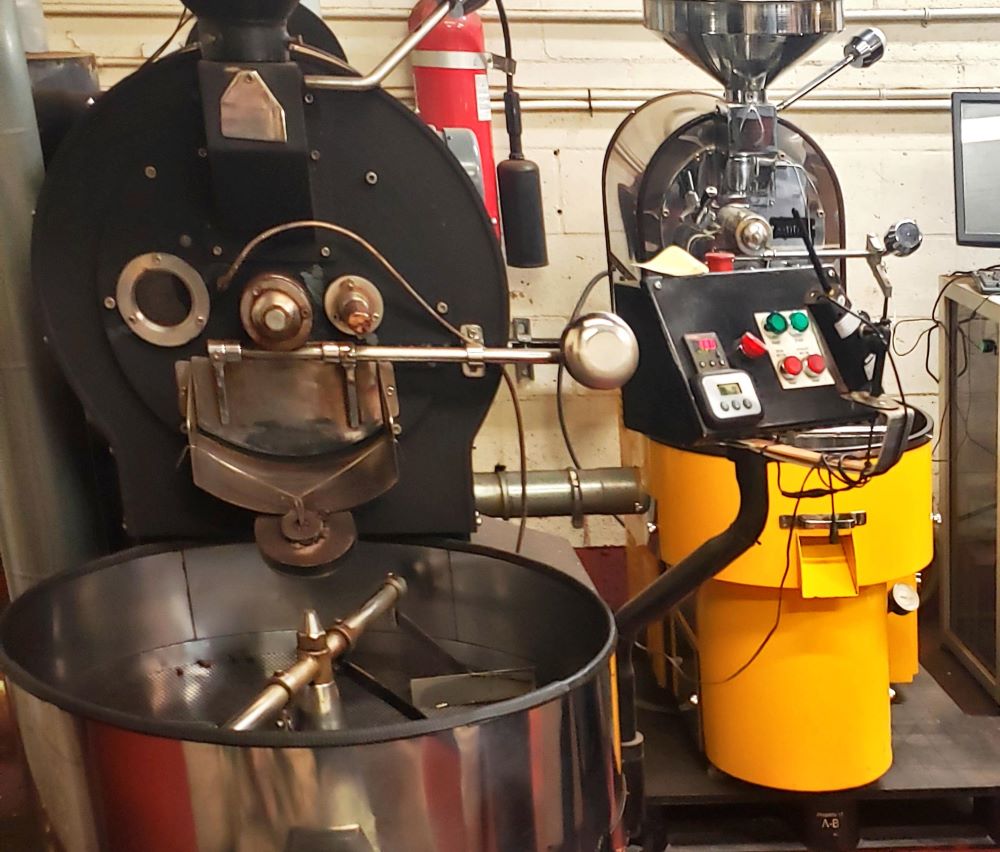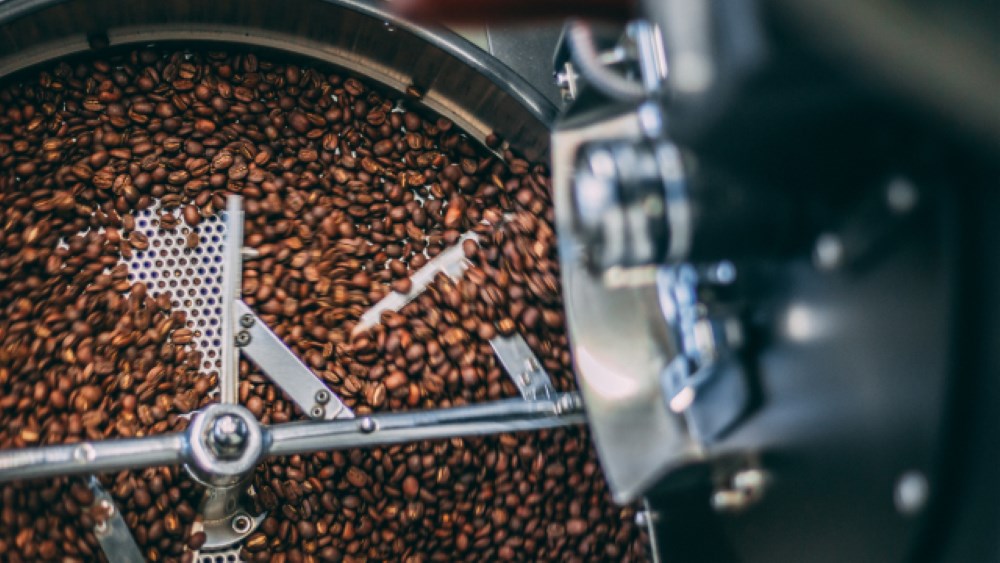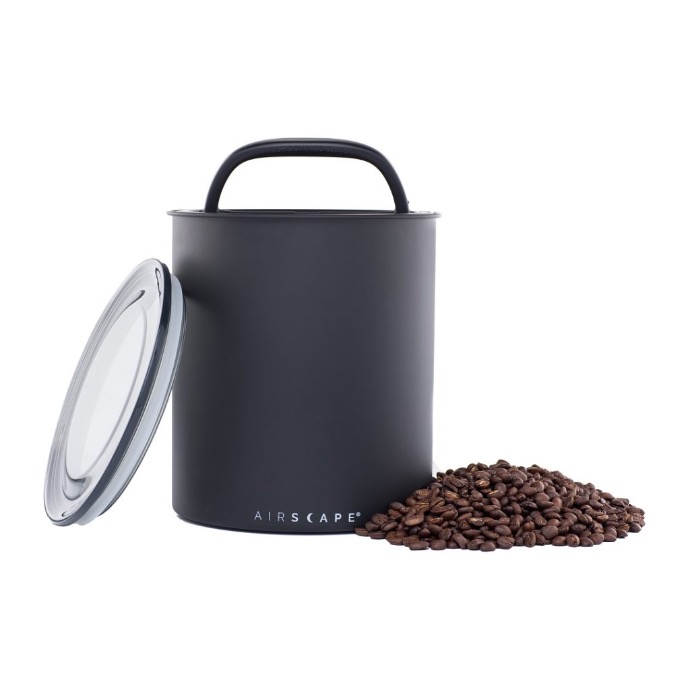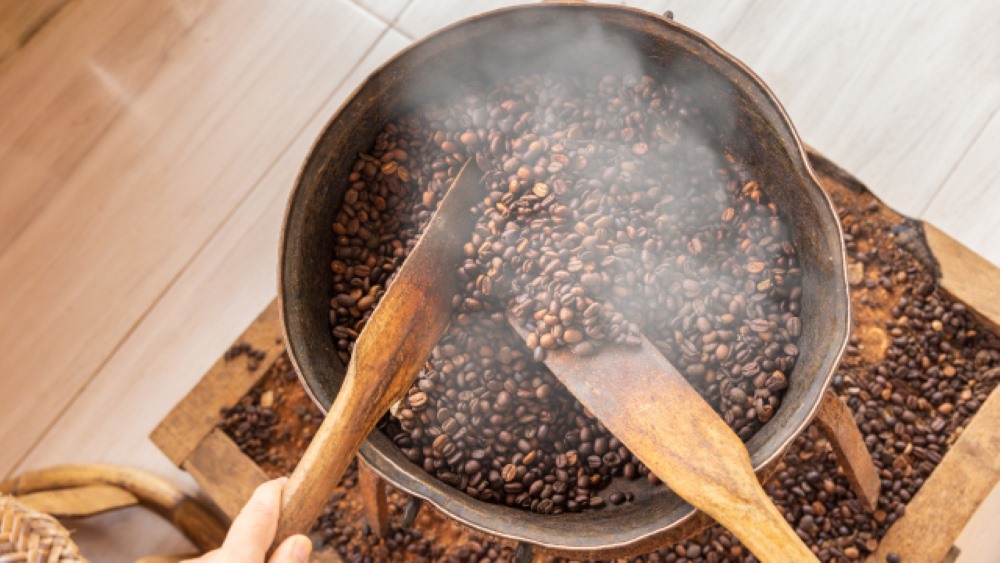What is Coffee Roasting?
Are you curious about the secrets behind roasting coffee beans to perfection? You've come to the right place! Coffee roasting is an art and a science, transforming green coffee beans into the flavorful, aromatic beans we grind and brew.
This process develops the beans' character and flavor, creating the deep, rich taste that coffee lovers crave. Without roasting, coffee would be bland and lack the distinctive aromas and flavors we enjoy.

Why Coffee Roasting Is Important
Did you know that roasting coffee beans can develop up to 1,000 different aromatic profiles? Essentially, coffee beans mature as seeds inside a coffee cherry. Before roasting, the green beans lack the aromatic fragrance of a brewed cup.
They go through various processing methods like pulping, sun-drying, and removing the parchment. Roasting creates 800 to 1,000 possible aromatic compounds, producing rich and diverse flavors that coffee drinkers love.
Types of Coffee Roasts
Coffee roasting results in three main types of roasts: light, medium, and dark. Each type offers a unique aroma and flavor profile.
Coffee Roasts | Light Roast Coffee | Medium Roast Coffee | Dark Roast Coffee |
Image |
|
|
|
Description |
Roast light roast coffee beans for a shorter period at lower temperatures. |
Roast medium roast beans longer and at higher temperatures than light roasts.
|
Roast dark roast beans the longest at the highest temperatures.
|
Flavor Profile |
These beans are light in color and retain their natural flavors.
Its mild and delicate taste highlights fruity and floral notes.
|
Balanced flavor profile with acidity, sweetness, and bitterness blend.
|
Bold flavor with low acidity. Dark roasts often feature-rich, deep flavors with notes of caramel and chocolate.
|
Preference |
It is ideal for those who prefer a subtle and nuanced coffee experience.
|
Coffee enthusiasts favor medium roasts for its robust flavor. | Perfect for those who enjoy a powerful coffee sensory experience. |
What is French Roast Coffee?
French roast coffee is a variant of the dark roast with a deep, rich color and a particularly intense flavor profile.
This roast is low in acidity while maintaining a full-bodied, heavy flavor with elements of dark chocolate. French roast is ideal for those who prefer a bold, robust coffee.

How to Roast Coffee Beans
Whether you prefer fancy drip or filtered coffee, espresso, or trendy cold brews, it all starts with green beans. Mastering the art of coffee roasting is a dream for any barista.
Let's delve into the process of roasting coffee beans and pick up some useful tips to elevate our roasting skills!
Three Steps of Roasting Coffee Beans
Roasting coffee beans involves three main stages: drying, roasting, and cooling. These stages are relatively easy to master with practice.
Drying Stage
Before roasting, you must dehydrate the beans. Coffee beans naturally contain about 10% humidity, which you must extract before roasting. The beans turn green to yellow during this stage, indicating chemical reactions. Heat the beans in a rotating drum to about 160°C for about 8 minutes.
Roasting Stage
As the main stage in the process, the roasting stage is arguably the most vital. In this stage, coffee beans develop most, if not all, of their character, color, and flavors. The roasting drum heats up to 200-230°C for about 15 minutes. As the temperatures rise in the roasting vent, the Maillard reaction occurs.
In the Maillard reaction, amino acids and sugars react to form color and aromatic compounds. Roasters adjust temperature and time based on specific bean requirements and desired roast levels.
Patience is key in this process, as seasoned coffee roasters have perfected the art after hours of experimenting with roasting profiles.

Cooling Stage
The final yet equally crucial stage in the art of roasting coffee beans is the cooling stage.
In this stage, coffee beans are already dried and full of flavor and the aromatic elements drinkers so much desire. An essential technique is colling roasted abruptly after the roasting stage to trap their developed flavors and aromatic compounds in the beans! The cooling stage only takes 5 minutes, after which coffee beans are ready for cupping, grinding, and brewing!
Storing Coffee Beans
Air, heat, light, and moisture are all enemies of a well-roasted coffee bean, and exposure can affect the bean's character when brewed.
Investing in proper storage canisters is a wise choice, especially considering retail packaging can be unreliable.
At Solai Coffee, we offer a range of airtight storage canisters that are perfect for preserving the quality and freshness of your roasted coffee beans at room temperature.
Explore our selection of storage solutions and ensure that every cup of coffee you brew is as rich and flavorful as it should be!

Roasting Coffee Beans at Home
Now that we understand the three steps of roasting coffee beans let's explore various methods for roasting coffee at home.
Ready to roast your own coffee at home? Start with the best! Source high-quality beans from Solai Coffee and experience the difference.
Skillet Pan Roasting
Place your favorite beans in a cast iron skillet over a gas burner or stovetop.
Use a wooden spoon to move the beans to maintain even roasting. The first crack occurs in about 10 minutes over medium heat, with the second crack in about 20 minutes.
After cooling, pour the beans into a metal colander and turn them for a few minutes before storing them.

Oven Roasting
Place coffee beans on a baking tray and put them in the oven.
Open the tray regularly to turn the beans for consistency. The first crack occurs in around 10 minutes, with the second crack between 15 to 25 minutes.
Hot Air Fryer Roasting
Spread green coffee beans on a thin layer of baking paper and place them in the fryer basket. Heat up to 180°C, stirring for an even roast every few minutes.
"Dog Bowl" Coffee Roasting
For a DIY approach, roast the beans by firing them into a fireproof dog bowl with a hot air gun while turning them until you achieve the desired roast.
Electric Home Coffee Roaster
Electric coffee roasters provide high-quality results with precise control over time, temperature, and batch size. These machines are perfect for maintaining consistency and achieving professional results at home.
Stovetop Coffee Roaster
A stovetop coffee roaster can hold up to 71 grams (2.5 ounces) of green beans. Roasters keep the beans in motion and listen for the first crack to achieve the desired roast.
Using Popcorn Machines for Coffee Roasting
Surprisingly, popcorn machines can be repurposed for roasting coffee beans. The hot air steam helps maintain consistent temperatures. Light roasts typically reach the first crack within 5 minutes, followed by the second crack between 15 to 20 minutes.
Importance of Thickness in Coffee Roasting
Consider the event where temperatures in the roasting vent are so high that the outside part of the coffee bean is “cooking” way faster than the inner part. The result is a coffee bean that tastes burnt and has probably lost its true DNA.
For that reason, maintaining thickness in each batch is essential to learning how to roast coffee beans.
Maintaining consistent thickness during coffee roasting is crucial. If the outside of the bean cooks faster than the inside, it can lead to a burnt taste and loss of authentic flavor. Consistent thickness ensures that each bean retains its unique flavor and aromatic character, which is essential for quality control and customer satisfaction.
Takeaway
Coffee roasting has defined our coffee experience for decades. The art of coffee roasting requires the luxury of time and patience to experiment with different roasting profiles to create your perfect cup of joe.
The drying, roasting, and cooling stages are all significant in determining the overall quality of the bean in cupping sessions. Maintaining thickness during roasting is vital for consistently producing high-quality coffee beans with exceptional flavor and aroma.
Ready to elevate your coffee roasting skills? Explore our range of premium coffee beans and equipment to create a customized roasting experience at home.



Coffee Roasting Basics: Guide to Perfect Beans